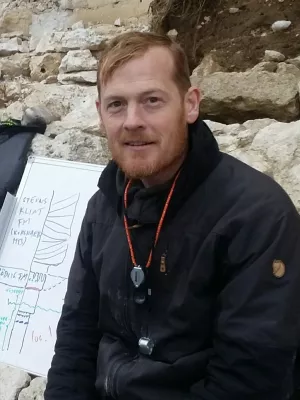
Mikael Calner
Professor

A shoreline to deep basin correlation chart for the middle Silurian coupled extinction-stable isotopic event
Author
Summary, in English
A shoreline to deep basin correlation chart for the middle Silurian coupled extinction-stable isotopic event is presented. The chart is a first attempt to synthesise new stratigraphic, faunal and stable isotopic data, as well as diversity changes among organic-walled microplankton (acritarchs), from the Grotlingbo-1 and Hunninge-1 cores on Gotland (Sweden), along with previously published data from the Bartoszyce IG 1 core (Poland), the Grafenwarth section (Germany), and the Ruhnu (500) and Ohesaare cores (Estonia). Accordingly, the relative timing of biotic, sedimentary, and stable isotopic changes associated with the event can be studied in high stratigraphic resolution across a basin area of similar to 120 000 km(2) (in the epicontinental Baltic Basin) and further off the Silurian continental margin into the Rheic Ocean (Grafenwarth section). A graptolite biozonation is presented for the Late Wenlock of the Grotlingbo-1 core and the middle Silurian carbon isotope excursion (CIE) is for the first time detected in stratigraphically continuous sections on Gotland. It starts close above the LAD of Monograptus flemingii and peaks at delta C-13 values of 2.4 parts per thousand in the Grotlingbo-1 core and at 3.8 parts per thousand in the Hunninge-1 core. The correlation chart forms the basis for several important conclusions for the mid-Silurian event: (a) it is associated with major and synchronous sedimentary changes across the basin independent of palaeodepth, i.e., the entire marine realm, from shoreline to deep basin, was affected; (b) the onset of the CIE is within the latest part of a regressive systems tract and related to carbonate platform exposure and termination; (c) the CIE peak interval correlates with the early transgressive systems tract and the development of laminated strata in the deeper parts of epicontinental seas, as well as with increased accumulation of organic matter in even deeper basins; (d) the major diversity anomalies among planktonic and nektonic taxa precede or occur close to the onset of the CIE.
Department/s
- Lithosphere and Biosphere Science
Publishing year
2006
Language
English
Pages
79-84
Publication/Series
GFF
Volume
128
Links
Document type
Journal article
Publisher
Taylor & Francis
Topic
- Geology
Keywords
- East Baltic
- Silurian
- Gotland
- Poland
- stable isotopes
- graptolites
- acritarchs
Status
Published
ISBN/ISSN/Other
- ISSN: 2000-0863

